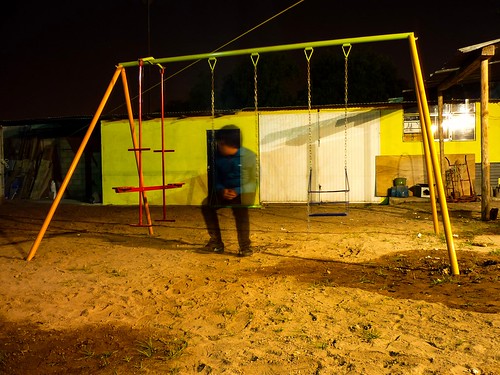Hence, the have to have for additive andor alternative approaches is expanding. Ideally such option treatment really should be safe, not pricey and specifically modulate cells which might be responsible for the inflammation andor counterregulation. Lately, quite a bit of interest has focused around the part of regulatory T cells for the handle of autoimmunity. There are actually presently two wellcharacterized PubMed ID:https://www.ncbi.nlm.nih.gov/pubmed/25342321 varieties of regulatory T cells, Tr cells and CDCD T regulatory cells. The CDCD T regulatory cells are a heterogeneous group of cells identified by the expression of CD along with the transcription element foxP. We not too long ago showed that these KJ Pyr 9 socalled naturally occurring T regulatory cells and regulatory T cells with specificity towards heat shock proteins could play a role in figuring out illness outcome in JIA ,. Following autologous stem cell transplantation for arthritis T regulatory cell function is restored coinciding having a remission on the arthritis (de Kleer et al ted). Additionally, oral treatment using a Hematoporphyrin IX dihydrochloride peptide (dnaJP), derived from heat shock protein dnaJ, restored T regulatory cells in peripheral blood mononuclear cells from individuals with RA . Therefore, as a result of insufficient numbers of regulatory T cells, feedback mechanisms fail, resulting in an unrestrained proinflammatory immune response and serious tissue harm in RA and JIA. A lack of a counterregulatory mechanism based by reguSArthritis Study Tracking immune responses in vivoMK Jenkins Center for Immunology, University of Minnesota Healthcare College, Minneapolis, Minnesota, USA Arthr
itis Res Ther , (Suppl):S (DOI .ar) We have developed new tools that enable detection of peptide HC II presentation to na e CD T cells in vivo. These tools had been employed to track early events in the immune response to a subcutaneously injected antigen. Following such an injection, antigen is promptly carried by way of lymphatic vessels in to the draining lymph nodes, and down by way of thin collagenbased conduits that run by means of the Tcellrich region. Langerhans cells and dermal dendritic cells close to the conduits acquired antigen, made peptide HC II complexes, and had been the very first cells to stimulate na e antigenspecific CD T cells. About hours just after antigen injection, dermal dendritic cells migrated in the injection internet site and arrived in the lymph nodes displaying a large variety of peptide HC II complexes. Elimination of those cells truncated CD expression by antigenspecific CD T cells and ablated the development of cellmediated immunity. Injection of antigen with all the adjuvant lipopolysaccharide allowed bloodderived myeloid and lymphoid dendritic cells to generate peptide HC II complexes. Antigenspecific, but not nonspecific, B cells acquired antigen and produced peptide HC II complexes by hours. These B cells migrated from random positions within the follicles for the border with all the Tcell region, and interacted stably there with peptide HC IIspecific CD T cells by about hours. These outcomes demonstrate the antigenspecific CD T cells interact using a range of antigenpresenting cell types through the key immune response.S Successful approaches in genetics of musculoskeletal diseasesMA Brown Botnar Research Centre, University of Oxford, UK Arthritis Res Ther , (Suppl):S (DOI .ar) Until  quite lately the field of genetics of musculoskeletal ailments had few successes to report, all essentially restricted to monogenic conditions or candidate gene findings largely of strongly associated genes
quite lately the field of genetics of musculoskeletal ailments had few successes to report, all essentially restricted to monogenic conditions or candidate gene findings largely of strongly associated genes  lying inside the MHC. Amongst these results stories have been crucial cont.As a result, the want for additive andor option strategies is increasing. Ideally such option remedy should be protected, not pricey and especially modulate cells which are responsible for the inflammation andor counterregulation. Lately, a great deal of focus has focused around the part of regulatory T cells for the control of autoimmunity. You’ll find at present two wellcharacterized PubMed ID:https://www.ncbi.nlm.nih.gov/pubmed/25342321 sorts of regulatory T cells, Tr cells and CDCD T regulatory cells. The CDCD T regulatory cells are a heterogeneous group of cells identified by the expression of CD along with the transcription factor foxP. We lately showed that these socalled naturally occurring T regulatory cells and regulatory T cells with specificity towards heat shock proteins may perhaps play a role in figuring out disease outcome in JIA ,. Following autologous stem cell transplantation for arthritis T regulatory cell function is restored coinciding with a remission of your arthritis (de Kleer et al ted). Moreover, oral treatment with a peptide (dnaJP), derived from heat shock protein dnaJ, restored T regulatory cells in peripheral blood mononuclear cells from patients with RA . As a result, resulting from insufficient numbers of regulatory T cells, feedback mechanisms fail, resulting in an unrestrained proinflammatory immune response and extreme tissue damage in RA and JIA. A lack of a counterregulatory mechanism primarily based by reguSArthritis Analysis Tracking immune responses in vivoMK Jenkins Center for Immunology, University of Minnesota Health-related School, Minneapolis, Minnesota, USA Arthr
lying inside the MHC. Amongst these results stories have been crucial cont.As a result, the want for additive andor option strategies is increasing. Ideally such option remedy should be protected, not pricey and especially modulate cells which are responsible for the inflammation andor counterregulation. Lately, a great deal of focus has focused around the part of regulatory T cells for the control of autoimmunity. You’ll find at present two wellcharacterized PubMed ID:https://www.ncbi.nlm.nih.gov/pubmed/25342321 sorts of regulatory T cells, Tr cells and CDCD T regulatory cells. The CDCD T regulatory cells are a heterogeneous group of cells identified by the expression of CD along with the transcription factor foxP. We lately showed that these socalled naturally occurring T regulatory cells and regulatory T cells with specificity towards heat shock proteins may perhaps play a role in figuring out disease outcome in JIA ,. Following autologous stem cell transplantation for arthritis T regulatory cell function is restored coinciding with a remission of your arthritis (de Kleer et al ted). Moreover, oral treatment with a peptide (dnaJP), derived from heat shock protein dnaJ, restored T regulatory cells in peripheral blood mononuclear cells from patients with RA . As a result, resulting from insufficient numbers of regulatory T cells, feedback mechanisms fail, resulting in an unrestrained proinflammatory immune response and extreme tissue damage in RA and JIA. A lack of a counterregulatory mechanism primarily based by reguSArthritis Analysis Tracking immune responses in vivoMK Jenkins Center for Immunology, University of Minnesota Health-related School, Minneapolis, Minnesota, USA Arthr
itis Res Ther , (Suppl):S (DOI .ar) We have created new tools that permit detection of peptide HC II presentation to na e CD T cells in vivo. These tools have been utilised to track early events in the immune response to a subcutaneously injected antigen. Following such an injection, antigen is immediately carried by means of lymphatic vessels into the draining lymph nodes, and down by way of thin collagenbased conduits that run through the Tcellrich area. Langerhans cells and dermal dendritic cells near the conduits acquired antigen, developed peptide HC II complexes, and were the initial cells to stimulate na e antigenspecific CD T cells. About hours soon after antigen injection, dermal dendritic cells migrated from the injection internet site and arrived within the lymph nodes displaying a large variety of peptide HC II complexes. Elimination of these cells truncated CD expression by antigenspecific CD T cells and ablated the improvement of cellmediated immunity. Injection of antigen together with the adjuvant lipopolysaccharide allowed bloodderived myeloid and lymphoid dendritic cells to make peptide HC II complexes. Antigenspecific, but not nonspecific, B cells acquired antigen and produced peptide HC II complexes by hours. These B cells migrated from random positions inside the follicles towards the border using the Tcell location, and interacted stably there with peptide HC IIspecific CD T cells by about hours. These results demonstrate the antigenspecific CD T cells interact having a assortment of antigenpresenting cell kinds throughout the key immune response.S Effective approaches in genetics of musculoskeletal diseasesMA Brown Botnar Analysis Centre, University of Oxford, UK Arthritis Res Ther , (Suppl):S (DOI .ar) Until quite recently the field of genetics of musculoskeletal ailments had couple of successes to report, all basically limited to monogenic circumstances or candidate gene findings mainly of strongly linked genes lying inside the MHC. Amongst these achievement stories happen to be crucial cont.
